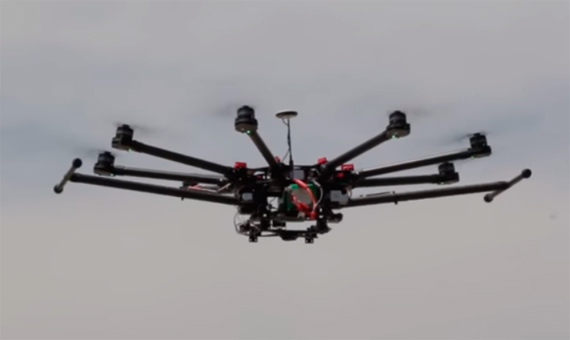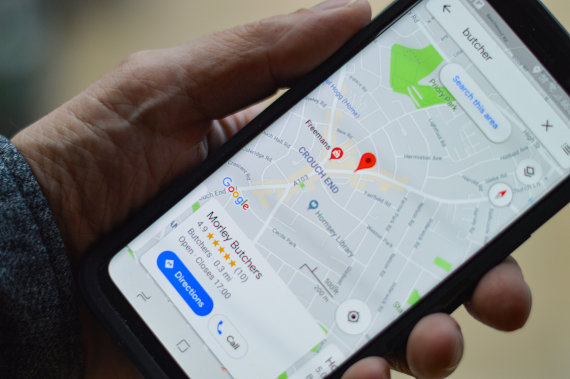As most of the world has now gone into lockdown, the entire scientific research community has gone into overdrive trying to understand the nature of the COVID-19 virus, as well as the way that it spreads, and finding a vaccine. A little publicised fact is that progress is being made with a little help from technology. In particular, Artificial Intelligence (AI) has from the very beginning, been busily working behind the scenes assisting the limitations of human knowledge in this massive endeavor. In this article, I briefly describe examples of different ways that this is being done.
Machine learning, as it is known, is the main driving force behind AI. In essence, what machine learning does is to take large amounts of data – called Big Data – and learns to detect patterns in the data. This enables it to predict future outcomes as well as reveal other insights about the data. For example, in a given country, it may be possible to predict the number of deaths from COVID-19 of males who are over 60 years of age. By using large amounts of data, a high confidence level can be assigned to these predictions as the following uses show.
AI can help with understanding and tracking the spread of COVID-19
It was a Canadian AI company called BlueDot that developed an AI program that alerted the world to coronavirus after the first case was detected in China on December 31st 2019. This program was designed to predict infectious diseases and locate and track their spread. It works by combining AI with the knowledge of epidemiologists who identify how and where to look for evidence of emerging diseases. BlueDot analysis over 100,000 reports daily in many languages and then sends out regular alerts to health care, government, business, and public health clients. The alerts provide a brief synopses of anomalous disease outbreaks that its AI program has discovered and the risks they may pose.

Contact-tracing smartphone apps, described later, were rolled out in Wuhan, China, very quickly after the city was quarantined to contain the virus. AI has been combined with other technologies to track and flag possible carriers of the virus. They also adopted AI for detecting people with fever in large crowds by the use of AI-powered smart glasses . Worn by security guards, they can check hundreds of people within a few minutes without making contact . A variation of this type of surveillance technology were used in bus and train stations as well as other public places in China where there is a high concentration of people. They did it by combining AI with new temperature measurement technology using computer vision. This technology made it possible to take body temperature, a key symptom of COVID-19, in a contactless way without affecting people’s normal behaviour. With this technology in place, those whose body temperatures exceeded the threshold could quickly be located. This proved to be an effective method because manual temperature measurement is time-consuming, and would increase the risk of cross-infection because of the necessary contact with others.
AI is helping with image scan analysis and reducing hospital staff workloads
Testing has become a key issue in the fight against COVID-19. Countries like South Korea and Germany have been seen as successful in handling the virus because of the amount of testing that is done in those countries. Thus, health authorities are keen to increase the numbers being tested but the main testing methods are labour intensive and time consuming. But AI is now assisting with other forms of testing, such as x-ray scanning. Various AI programs are now available for chest screening that can highlight lung abnormalities in a chest X-ray scan and provide a COVID-19 risk evaluation much faster than human radiologists.

Robots using AI are minimizing contact between humans
A range of AI-based robots have emerged during recent months that help in the COVID-19 battle by reducing contact between patients and health care workers – minimizing the risk of cross-infections.
For example, Chinese firms are using drones and robots to perform contactless delivery and to spray disinfectants in public areas to minimize the risk of cross-infection. Other robots are checking people for fever and other COVID-19 symptoms and dispensing hand sanitizer foam and gel. Robots are also being used to serve food and medicine to patients and disinfecting rooms to minimize contact with human staff.

Many other examples exist in other parts of the world. Robot dogs are helping doctors assess patients in US hospitals. A company called Boston Dynamics have produced a robot dog, known as Spot. This robot is being used to reduce the contact health workers must have with potentially contagious patients.
Resistance to the use of AI in healthcare
AI has been used in healthcare systems for many years for a range of applications and has encountered some resistance – particularly with regard to use of medical patient data. Having access to medical data raises many sensitive issues of privacy and confidentiality. This became a contentious matter when the British NHS system failed to comply with data protection rules when it provided 1.6 million patient records to a Google owned company in 2017 for machine learning analysis. Nevertheless, as this pandemic has spread so rapidly, contact-tracing apps are now being touted as a necessary tool as a means of combating this virus.
Contact tracing apps
Contact-tracing apps are already in widespread use in Asia – in countries like China, Hong Kong, Singapore and South Korea – they are also now being used in other parts of the world such as India, Italy, and Israel and are development in other nation states continue. They vary in the way they work but generally use the fact that smartphone users whereabouts are detectable and therefore, can detect close contact with other users. AI algorithms can then determine the risk of cross infection and then alert users of such risks. For example, an app is being trialled for use by the British government that works by using the Bluetooth protocol to identify other smartphone owners who are in close proximity to each other. Thus, a person who is not infected but in close proximity to someone that has COVID-19 symptoms, could receive an alert.

Concerns have been raised about the use of contact-tracing apps particularly with regard to privacy and the possibility of government surveillance of individuals – i.e., the threat of the “Big Brother” State. However, as Dirk Brockmann, an epidemiologist who leads a project fighting coronavirus at the Robert Koch Institute in Germany says: “There is a simple way that people can help the fight against coronavirus, beyond washing their hands – donate their data”. Most people now own smartphones and, if they can be persuaded that donating their data will help eliminate the virus and that this data will be used anonymously, then they may be persuaded to submit data voluntarily. This is vitally important because according to the University of Oxford’s Big Data Institute, “a contact-tracing app could help stop this pandemic, but 80% of smartphone owners would need to use it. This target sets the bar very high whatever form of persuasion is used.
Conclusions
AI has made a significant impact to fighting this pandemic. AI has been adopted in some healthcare applications – sometimes with a slower take up than was anticipated. However, when the battle with this pandemic is over, I think AI will become more prominent in the years to come in healthcare systems around the world.
Comments on this publication